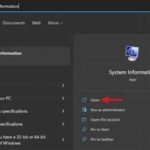NVIDIA GeForce GTX 260 Core 216 was a show-segment graphics card by NVIDIA. It was launched on 16th September 2008. Built on the 65 nm process, and based on the GT200 graphics processor, in its G200-103-A2 variant, the card supports DirectX 11.1. Even though it supports DirectX 11, the feature level is only 10_0, which can be problematic with many DirectX 11 & DirectX 12 titles.
The GT200 graphics processor is a large chip with a die area of 576 mm² and 1,400 million transistors. Unlike the fully unlocked GeForce GTX 280, which uses the same GPU but has all 240 shaders enabled, NVIDIA has disabled some shading units on the GeForce GTX 260 Core 216 to reach the product’s target shader count. It features 216 shading units, 72 texture mapping units, and 28 ROPs.
NVIDIA has paired 896 MB GDDR3 memory with the GeForce GTX 260 Core 216, which are connected using a 448-bit memory interface. The GPU is operating at a frequency of 576 MHz, memory is running at 999 MHz. Being a dual-slot card, the NVIDIA GeForce GTX 260 Core 216 draws power from 2x 6-pin power connectors, with power draw rated at 182 W maximum. Display outputs include: 2x DVI, 1x S-Video.
NVIDIA GeForce GTX 260 Core 216 Graphics Video Card is connected to the rest of the system using a PCI-Express 2.0 x16 interface. The card measures 267 mm in length and features a dual-slot cooling solution. Its price at launch was 299 US Dollars. The graphics card supports DirectX 11, but the feature level is only 10_0 which can be hard with many DirectX 11 and DirectX 12 titles.
It is a large chip with a die area of 576mm square and 1400 million transistors. NVIDIA has disconnected some shading units on the NVIDIA GeForce GTX 260 Core 216 to acquire the product’s target shader count. NVIDIA GeForce GTX 260 Core 216 Graphics Video Card is a dual-slot card that draws power from power connectors with a power draw rated at a maximum of 182W.
Its price at the launch was US$ 299. Also, 3D mark vantage is included in the box. It is a new video graphics card from NVIDIA. This is the EVGA version. It also has other versions and they all have their own eight manufacturers of each of them and their name. This NVIDIA GeForce GTX 260 Core 216 graphics video card is faster than the 4870 and in just about every game, it has some of the best benchmarks with details.
The core has eight clusters of 24 and now it has nine clusters of 24. As for your SIMD clusters, they added more and they also gave a few more texturing units from 64 to now 72 units. The super clock version of the graphics card has a nice little bump in all the frequencies. From the previous version the memory clock, the shader clock, and the core clock, all of them stayed the same as before between the GTM 260 and NVIDIA GeForce GTX 260 Core 216 Graphics Video Card.
Beat out the 4870 two power connectors right where the 6-pin PCIs are gonna require a 500 W minimum power supply and make sure that you keep in mind a lot of the previous cards were only 450, these are 500 and you will need 36 amps on the plus 12-volt rail. It fits on a scale of cards between 260 and 280.
Features of NVIDIA GeForce GTX 260 Core 216
It is a good amount of amperage which you are going to need. You will get two DVI ports, these are dual link DVIs 2560 by 1600 maximum resolution. You have got a 30-inch you get the s-video and its digital s-video oddly enough. This one did not come with a breakaway cable, but it did come with a DVI to HDMI which does have HDMI support.
NVIDIA GeForce GTX 260 Core 216 Graphics Video Card comes with six-pin PCI Express 2 Molex connectors in the case. An older power supply and ironically enough it has two of them. VGA to DVI adapter and you get your audio loop cable. PCI Express x16, you opted in the box and your SLI. It sparks fierce competition which lowers the prices.
| Graphics processor |
|
| Graphics card |
|
| Clock speeds |
|
| Memory |
|
| Render configuration |
|
| Theoretical performance |
|
| Board design |
|
| Graphics features |
|
NVIDIA GeForce GTX 260 Core 216 Graphics Video Card’s main features are:
- Graphics chip: GeForce GTX 260 with 216 cores, running at 576 MHz.
- Memory: 896 MB GDDR3 memory (448-bit interface) running at 1 GHz (“2 GHz”).
- Bus type: PCI Express x16 2.0.
- Connectors: Two DVI and one S-Video output (with component video support).
- Video Capture (VIVO): No.
- Cables and adapters that come with this board: Will depend on the manufacturer (we reviewed the reference model).
- Number of CDs/DVDs that come with this board: Will depend on the manufacturer (we reviewed the reference model).
- Games that come with this board: Will depend on the manufacturer (we reviewed the reference model).
- Programs that come with this board: Will depend on the manufacturer (we reviewed the reference model).
- Minimum Required Power Supply: 500 W.
- More information: https://www.nvidia.com
- Average price in the US*: USD 272.50
Reviews of NVIDIA GeForce GTX 260 Core 216
From the previous version the memory clock, the shader clock, and the core clock, all of them stayed the same as before between the GTM 260 and GTX 260 core 216. The super clock version of the graphics card has a nice little bump in all the frequencies which kicked up this NVIDIA GeForce GTX 260 Core 216 graphics video card.
This graphics video card, NVIDIA GeForce GTX 260 Core 216 Graphics Video Card, outperformed the GTX 280 but not the GTX 280 for the win or the super clock versions that are due to higher frequencies. Beat out the 4870 two power connectors right where the 6-pin PCIs are gonna require a 500 W minimum power supply. Most of you guys with modern power supplies are not gonna have any problems.
Resolutions and Image Quality Settings of NVIDIA GeForce GTX 260 Core 216 Graphics Video Card
Since we were comparing very high-end video cards, we ran all our tests under three 16:10 widescreen high resolutions: 1680×1050, 1920×1200, and 2560×1600. We always tried to run the programs and games in two scenarios for each resolution, one with low image quality settings and then maxing out the image quality settings. The exact configuration we used will be described together with the results of each individual test.
Also, 3D mark vantage is included with the EVGA or NVIDIA precision overclocking utility in the box which is very nice to have. You will get two DVI ports, these are dual link DVIs 2560 by 1600 maximum resolution. You have got a 30-inch you get the s-video which is very nice and it’s digital oddly enough.
NVIDIA GeForce GTX 260 Core 216 Graphics Video Card did not come with a breakaway cable, but it did come with an even better DVI to HDMI which is beneficial because it does have HDMI support. It comes with six-pin PCI Express 2 Molex connectors in the case. An older power supply and ironically enough it has two of them. VGA to DVI adapter and you get your audio loop cable. PCI Express x16, you opted in the box and your SLI. if you want to do two or three you can.
This is also ready for CUDA physics. You guys are now getting a product that is cheaper and with better specs, and better frequencies. All your performance is increasing, and it doesn’t cost you anything and ironically it sparks fierce competition which lowers the prices. The super clocked version came in even higher in 19.14 and 19.6 for the GTX 280 so it’s right next to the GTX 280 and its significantly 21.62 for the GTX 280 for the win.
These are some pretty interesting benchmarks of NVIDIA GeForce GTX 260 Core 216 Graphics Video Card. The GTX 260 came in at 10712 scores in performance mode. It has been proven that not even NVIDIA’s updated graphics video card can be a better option than the competition with ATI right now. The additional stream processors give only a small benefit as compared to the original GTX 260 and HD 4870 has similar speeds and are comparatively cheaper.



